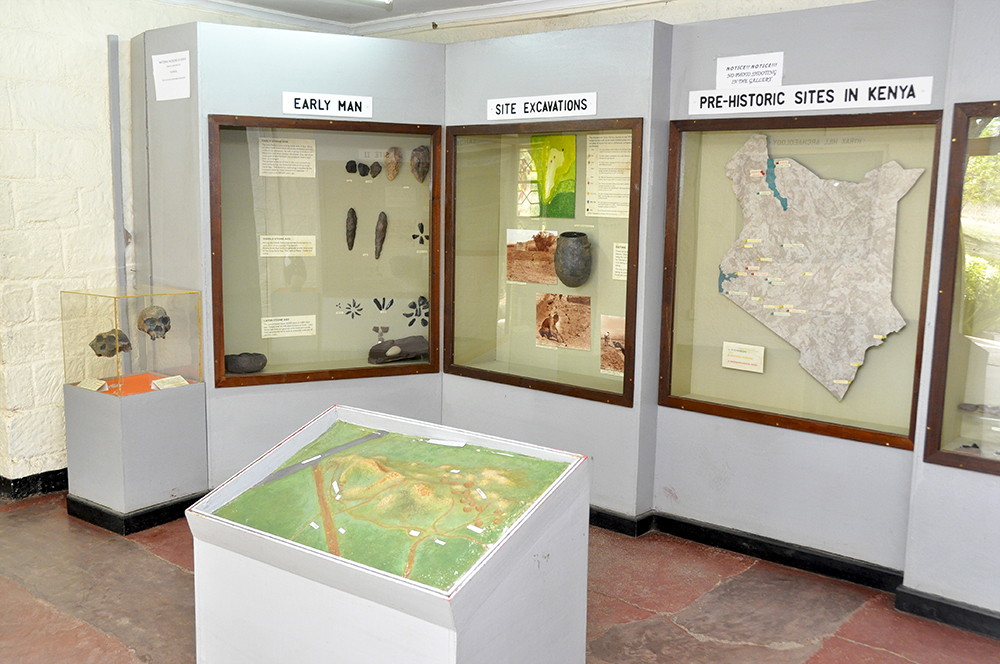
Hyrax Hill Museum is located 4kms from the central business district of Nakuru town and 152 Kms from Nairobi city, approximately 400meters from the Nairobi –Nakuru highway.
It is a narrow rock spur of lava, lying on the eastern edge of Nakuru town with a summit rising to an altitude of 1,900 meters above sea level; it stands at 50m above the surrounding grassy plains.
It is known locally as Hyrax hill owing to the large number of hyraxes (Proscenia capensis) which inhabit the rocks; presently only a few of these animals remain and can be occasionally spotted around the summit. The site covers an area of 59 hectares most of which is covered by the hill.
It’s composed of several habitation hollows believed to have been inhabited by the Sirikwa pastoral group who were later assimilated to the Kalenjin. The site was discovered by a colonial farmer, Mrs. Selfe, in the year 1920 and opened to the public in 1965 under the National Museums of Kenya. It was gazetted as a national monument on 13/04/95 Gazette Notice 2018 and later confirmed on 26/01/96 Gazette Notice 343.
ATTRACTIONS
Live Exhibitions: These include tortoises and guinea fowls.
The Gallery: This hosts exhibitions of three kinds: material culture, archaeology and natural history.
Archaeology section: This section mainly displays archaeological features that are mostly found at the site, a brief description of Hyrax Hill, a model showing a Sirikwa settlement, early man stone tools (from early stone age to later stone age) and the map of Kenya showing where prehistoric sites in Kenya and where they are located. There are also early man skulls belonging to the Australopithecus Boisei and the Homo erectus displayed.
Material Culture: Most of the cultural objects displayed are from the fishing, pastoral and farming ethnic groups living in the Rift Valley. These are: Maasai, Kalenjin, Turkana, Kikuyu and Luo, each of whom settled in the Rift Valley at different times
Natural History: Contains a showcase of Nakuru region’s natural side including animals such as rock hyrax, water buck, lesser flamingo and the spitting cobra.
Open Archaeological Sites: The history of the site dates back to 1926 evidence of habitation was noted through the presence of ancient burial sites and stone bowls which were confirmed to be evidences of early pastoralist’s community inhabiting the area. Further excavations were later done by Dr. Mary Leakey which led to the discovery and confirmation of late Iron Age habitation. Other excavation works have been undertaken by Ron. J. Clerk and J.C. Onyango Abuje in the early 1970s.
Hill Fort: This is located on the rocky ridge of the hill, a little north of the highest point, overlooking the west side. It consists of a small area measuring 30 by 15 meters of partially leveled and cleaned rocks. The rough stone wall around it might have been higher originally or surrounded with a fence. It served as a lookout to watch herds grazing the plain and observe approaching people, enemies or allies.
Bird Watching: Launched in 2018, the Bird watching Club has done participated in bird watching programs at different places including Soysambu, Hyrax Hill Museum site and Elementaita. To participate in this activity one has to book earlier.
Education programs: Hyrax Hill Prehistoric Site and Museums runs several education programs with different stakeholders. A creativity club for children is in place at the site and actively participates in various art activities with the local community.
Community Engagements with Partners: Hyrax Hill Museum collaborates communities through various museum activities such as donation of wheelchairs to People living with Disabilities, distribution of food hampers to needy families, distribution of dignity packs to girls. Some of these activities are courtesy of organizations such as the Lions Club of Menengai.
BROCHURE
Contact
The Curator,
Hyrax Pre Historic Site & Museum,
P.O Box 9535-00100, Nakuru.
